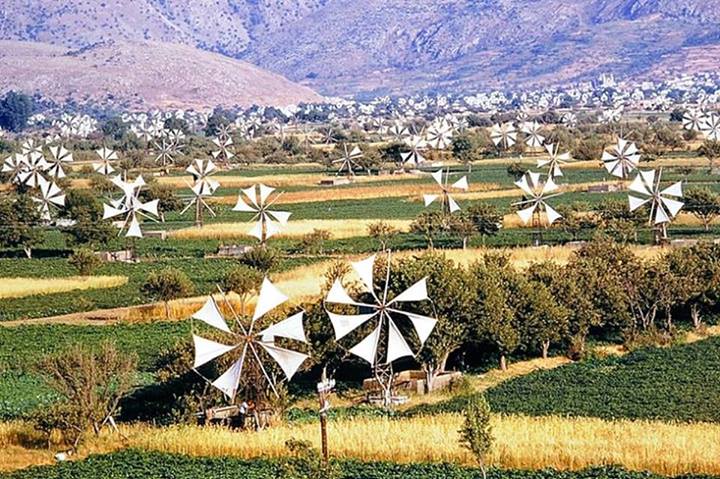Crete, the largest of the Greek islands, is a land of diverse landscapes, rich history, and vibrant culture. Among its many iconic features, the coastal windmills stand out as symbols of the island’s agricultural heritage and engineering ingenuity. These picturesque structures, dotting the coastline and inland regions, offer a glimpse into Crete’s past while contributing to its unique charm. This text explores the history, significance, and enduring appeal of coastal windmills in Crete, highlighting their role in shaping the island’s landscape and culture.
The Historical Significance of Windmills in Crete
Windmills have been a part of the Cretan landscape for centuries, with their presence recorded as far back as the Venetian period (1204-1669). The Venetians, who occupied Crete for several centuries, introduced advanced milling techniques and infrastructure, including windmills. These structures played a crucial role in the island’s economy, particularly in grinding grain and pumping water for irrigation.
During the Ottoman period (1669-1898), the use of windmills continued to expand, reflecting their importance in agricultural practices. By harnessing the power of the wind, these mills made it possible to process large quantities of grain and other agricultural products, supporting the local economy and community sustenance.
Architectural Features and Functionality
Cretan windmills are characterized by their robust construction and distinctive design. Built to withstand the island’s sometimes harsh coastal weather, these structures are a testament to the ingenuity and resourcefulness of their builders.
1. Tower Design: Most traditional windmills in Crete are of the tower mill variety. These structures consist of a cylindrical stone tower with a rotating cap that houses the sails. The tower’s height and diameter vary, but they are typically constructed from local stone, providing durability and stability.
2. Sails and Mechanism: The sails of the windmills, often made from wood and canvas, are designed to capture the wind effectively. As the wind turns the sails, a series of gears and shafts inside the mill convert this kinetic energy into mechanical energy, which powers the milling process. The internal mechanisms, usually crafted from wood, are intricately designed to ensure efficient operation.
3. Functional Adaptations: While the primary function of many Cretan windmills was grain milling, some were adapted for other purposes, such as pumping water or processing other agricultural products. These adaptations highlight the versatility and practicality of windmill technology in addressing various local needs.
The Cultural and Economic Impact
Windmills are more than just historical relics; they are integral to the cultural and economic fabric of Crete. Their presence has shaped the island’s agricultural practices and contributed to its socio-economic development.
1. Agricultural Backbone: Windmills were essential in supporting Cretan agriculture, particularly in the grinding of grain into flour. This capability was crucial in a time when manual labor and animal power were the primary alternatives. The efficiency of windmills allowed for greater productivity and food security, contributing to the well-being of local communities.
2. Symbols of Ingenuity: The design and operation of windmills reflect the innovative spirit of the Cretan people. These structures symbolize the ability to harness natural forces for practical purposes, embodying a harmonious relationship between humans and their environment.
3. Cultural Heritage: Windmills are an enduring symbol of Cretan cultural heritage. They appear in local folklore, songs, and literature, often representing resilience and the island’s agricultural roots. Festivals and cultural events sometimes feature windmills, celebrating their historical significance and continued relevance.
Modern Relevance and Preservation
Today, many of Crete’s windmills stand as picturesque landmarks, attracting tourists and serving as reminders of the island’s rich history. Efforts to preserve and restore these structures are essential in maintaining their legacy.
1. Tourism and Education: Restored windmills have become popular tourist attractions, offering visitors a glimpse into the island’s past. Educational programs and guided tours help to explain the historical and technical aspects of windmills, fostering appreciation and awareness of their importance.
2. Restoration Projects: Various restoration projects are underway to preserve the remaining windmills. These efforts often involve meticulous work to repair and reconstruct the stone towers, sails, and internal mechanisms. Restoration not only protects these historical structures but also revitalizes them as functional monuments to Cretan heritage.
3. Sustainable Practices: Some modern adaptations of windmills focus on sustainability, integrating renewable energy technologies. By harnessing wind power for contemporary uses, these initiatives continue the tradition of utilizing natural forces in an environmentally friendly manner.
Conclusion
Coastal windmills are iconic symbols of Crete’s landscape, reflecting the island’s historical, cultural, and technological heritage. These structures stand as testaments to the ingenuity and resourcefulness of past generations, who harnessed the power of the wind to support their agricultural practices and community life. Today, efforts to preserve and restore these windmills ensure that their legacy endures, offering a connection to Crete’s rich past and a source of inspiration for the future. Whether viewed as picturesque landmarks, cultural symbols, or functional heritage sites, the windmills of Crete remain a vital and cherished part of the island’s identity.


